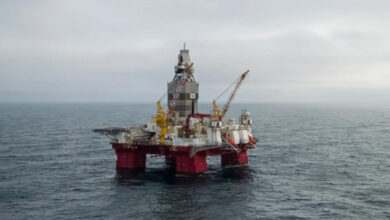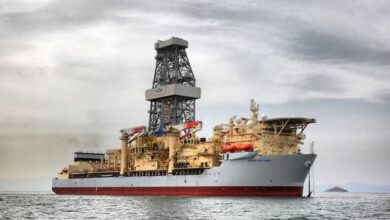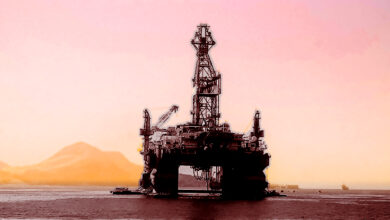Complex environments call for better navigation of the human terrain
Integrated approach can help operators, drilling contractors mitigate social, security risks
By Frederik Rijkens, The Cormorant Group
This article explores a new and more effective approach to community engagement in complex, low-capacity environments. The concept of the human terrain navigation is derived from an in-depth sociocultural understanding of community behavior that helps drive more effective community relations and reduce security costs and uncertainties.
The challenge

The success of operators and drilling contractors in low-capacity countries depends on their ability to “navigate the human terrain” in difficult operating environments.
Too often, drilling operations suffer shutdowns because of community problems or security risks. This affects even sophisticated operators and national companies – for example, Shell in Nigeria, Chevron in Poland and both Tullow and the national oil company NOCK in Kenya.
Generally, E&P companies have tried to treat the local communities fairly, so why do tensions with local communities persist and rig shutdowns and security threats still happen? Is it because of something the company did wrong, or has the company’s operation simply become a convenient hostage of existing conflicts and tensions that are out of the company’s control? Perceived neglect by the central government, separatism, religious extremism, land ownership conflicts, rivalry among tribes, clans and families, conflicting expectations, cultural tension and uncontrolled crime all can have dramatic effects on operations.
The fact that these tensions regularly interfere with operations begs the question: Is the current industry best practice for mitigating the risks arising from local communities good enough?
With so much at stake, companies need ways to improve their ability to avoid having their operations embroiled in existing conflict and to better mitigate their own impacts.
Industry response to human terrain challenges
Industry and international organizations have recognized that companies need a “social license to operate,” the approval of the local community granted when the cumulative effects of the company’s activities are perceived as positive. Recognizing this core principle and carrying it further, sophisticated E&P companies have developed methods and structures based on guidelines articulated in the International Petroleum Industry Environmental Conservation Association’s 2004 Guide to Social Impact Assessment, the UN’s 2011 “Guiding Principles on Business and Human Rights” and the International Finance Corp’s 2012 update to its Policy on Environmental and Social Sustainability.
Sophisticated E&P companies have built industry best practice on the basis of these recommendations, developing integrated processes to engage local communities, communicate more effectively and more seriously take their interests into account. They engage stakeholders at the conceptual design stage before starting any activity in the field. They perform social baseline surveys, provide local content and community grievance procedures and sign MOUs with communities for empowerment and capacity building (skills and infrastructure).
Is the ‘industry best practice’ human terrain navigation good enough?
Operators have been able to achieve significant improvements in the way they “navigate the human terrain.” Even the most sophisticated operators in Africa, however, often struggle with implementation in the field. Let’s look the following story and the perspectives of some of the players.
View from a community
The community in our story lives in a far corner of the nation and speaks a tribal language. A rival tribe runs the nation’s government from the capital. The community distrusts the government and feels neglected and marginalized. The community believes that the oil company’s license agreement and permits have been sold by their “corrupt” tribal adversaries in the national government. There is support in the community for a separatist movement. The government in the capital, in turn, does not know and isn’t exceedingly concerned about the community and has its own priorities.
The community considers the oil as their property and has high expectations of the wealth and power it will soon bring them. The community has little knowledge of seismic, drilling and field development. Opportunists have visited to tell the community that the oil company will destroy their land. Some politicians try to use the oil activities for their political purposes.
The company does not have an office in the community and does not communicate often nor, in the community view, very clearly. It is perceived to be in partnership with their tribal adversaries in the government. Thanks to rapidly expanding mobile networks, some community members read and write blogs and tweets.
Feuds and fault-lines exist in the community, including conflicts over land ownership where the company is drilling. There is no register of land ownership, and other than tribal institutions, no effective governance, law or police in the area. Almost every family is armed, and a regional terrorist group has aspirations of expanding its presence into the area. A local family has recently blocked the road to the rig, demanding compensation. The company swiftly paid money to lift the blockade. The community learned a valuable lesson: You get rewarded if you cause problems for the company.
The Company’s perspective
The company in our story has both a drilling and a community relations (CR) department. The drillers are experienced engineers, mainly expats, who know how to drill a well within budget and safely from an HSE point of view. The drilling department manages a number of subcontractors. They do not know the communities.
CR includes a community liaison officer (CLO) recruited from the community. The CR team knows very little about drilling operations. The CLO is moved to the company’s headquarters in the capital and visits the field when required. There is also a security department, which does not trust the CLO to keep information confidential.
The company is in the exploration phase and wants to minimize the efforts and costs of engagement with the community. A water well has been drilled for the community. Other than that, the company operates mostly in reactive mode and deals with community and security problems as they occur.
The CLO’s perspective
The CLO in our story is from the community, speaks the tribal language and talks to the communities on behalf of the company. This gives the CLO a near-monopoly on information to and from the community.
The CLO assists with land access rights, claims for damage or nuisance, local recruitment and distribution of benefits. The community sees the CLO as the person who distributes jobs, benefits and payment of claims. His clan, particularly his family, expects the CLO to direct a significant flow of benefits toward them, creating a conflict of loyalty for the CLO between family, clan and employer. He knows that paying thousands of dollars means nothing to the company if it can avoid downtime on the rig.
If there is trouble afoot in the local community and the CLO informs the company, he knows that he and his family would be at serious risk. Caught up in this powerful and dangerous conflict of interest, the CLO finds every excuse to remain at his post in the capital and avoid the trouble likely to come from too much time in the field.
The story of Ekiru’s Goat
Ekiru speaks the tribal language. He has a family with two children. His five goats provide them a subsistence living.
One day, Ekiru’s pregnant goat is killed by a truck. The truck kept on driving. It belongs to a drilling subcontractor, but Ekiru does not know that. Ekiru walks eight miles to the rig to speak to the CLO about compensation. The CLO is not there. The following week, Ekiru walks to the rig again and meets the CLO. Ekiru cannot show the dead goat because he was forced to use it for food after the accident. Despite the tremendous economic hardship from the loss of the goat, he is not compensated. A week later, Ekiru hears that the CLO’s brother-in-law has obtained two new goats.
At the rig, Ekiru saw men employed from a rival tribe who came from the nation’s capital. Ekiru goes to the rig again to demand a job, but he is referred to a “hiring process” he does not understand and cannot access. Ekiru’s teenage son, in frustration, throws a rock against a passing truck. The company does not investigate “social” near-misses, so the brewing anger continues unnoticed, except by the representative of the regional terrorist group.
The story of the water well
Frustrated over their struggle to improve relations with the local community, the company donated a water well. Unfortunately, the situation only deteriorated further. Why?
The company did not know that the well was drilled on the land of the CLO’s family, who charged fees to other villagers for access to the water.
These stories illustrate how failing to understand the fine details in the human terrain can lead to costly operational liabilities and how tensions can easily build up when a new entity is introduced into fragile environments, such as the arrival of the rig in our story. How does this affect security for the company’s staff and contractors?
Why is human terrain navigation essential for security?
To launch an attack on the company’s facility or people, the attacker requires a fertile soil in the community. He needs detailed information on the target and its security and on the identity of staff and their whereabouts. The attacker needs support to assemble and hide his team or to recruit locally. He needs to hide vehicles and weapons in the community and needs the community to protect the secrecy of the operation, including those community members working as employees and contractors for the company.
Local communities are more likely to provide support and secrecy for a potential attacker if they feel bitter and feel that injustice has been inflicted upon them by the company’s activities. Once the local community feels morally justified in supporting or carrying out violence against the company, not only is it a very serious security liability, but it is also very difficult to reverse.
Example: In-Amenas, Algeria,
Algerian terrorist Mokhtar Belmokhtar attacked the Tigantourine gas plant near In-Amenas in January 2013, murdering 39 expats and one local guard. This happened after a bitter conflict over seven months between operator Sonatrach and the local Touareg people, leading to a hunger strike by the Touaregs a month before the attack. The conflict was over contracts for driver jobs.
Belmokhtar is not from the local community but saw the conflict between the company and community as an opportunity. The consensus of intelligence agencies and security analysts is that his group spent up to six months prior to the attack targeting the facility and obtaining key inside information via local sympathizers. Belmokhtar’s group had the list of names of the expats and knew where they stayed at the compound or worked onsite. He knew the date of the partner VIP visit, during which he planned his attack. Full secrecy about Belmokhtar’s preparations was maintained.
An “unusual number” of local staff did not show up for work on the day of the attack. Other local staff at the gas plant were seen hugging the terrorists when they arrived.
How to improve navigation of the human terrain?
These stories illustrate some of the human terrain challenges and the limitations of the traditional “gates, guards and guns” approach to security and of typical community engagement programs.
It is essential for companies to obtain critical insights about the community – its perceptions and expectations, social fault lines, stories that are being spread and possible actions being planned against the company – and to know how these evolve.
How can this be dealt with more pro-actively? How can expectations and communication be managed better? How can transparency and the sense of involvement and control of their destiny by the community be improved? How can the sharing of human terrain information be improved within the company, ensuring better cooperation among drilling, project, operations, contractors, subcontractors, CR and security, so they can speak and act as one?
A new approach?
Navigating the human terrain is a new approach that combines know-how from the fields of anthropology, conflict resolution, political economy, advanced special operations, community engagement and development and E&P project management. It is delivered as a service provided by a social risk consultancy firm, involving long-term persistent engagement with communities by a team living in the community.
The team acts as adviser to the company, proactively engaging community members on a daily basis, building relations, obtaining key insights, explaining what the company does and why. The team maintains an office in the community to receive and record claims and complaints from the community, process these and advise the company on the appropriate response and implementation. The team communicates daily with drilling/operations, CR and security, sharing information with the company and its contractors.
The team includes expats to avoid conflicts of loyalty and issues of tribal rivalry, and works closely with the company’s CLO and security team. Team skills include anthropology, conflict resolution, community development and capacity building, E&P projects and security.
The field team is backed by the consultant’s central office, performing scientific analysis, monitoring social and local media, providing linguistic support, maintaining information databases, observing human terrain evolutions, drafting engagement plans, preparing reports and recommendations for the company.
Conclusions
Paraphrasing a colleague, Michael Keating: As the oil patch looks into the next decade of exploration and production, Africa stands out as one of the most promising yet problematic areas. Fulfilling its promise will neither be quick nor easy, but all companies that deeply understand the human terrain can outperform while supporting stability and growth in their neighboring communities.
Wouldn’t that be great for everyone involved?
This article is based on a presentation at the 2014 IADC Drilling Africa Conference & Exhibition, 1-2 October, Paris.
Click here for an analysis of the In-Amenas investigation report.





Fantastic article
A purely reactive, defensive community engagement posture will ultimately fail. Most of the strategies implemented by companies, operating in austere environments, are at best ineffective, and at worst, counterproductive making community engagement actually more difficult.
Our thoughts on these topics in 3-parts:
http://www.enodoglobal.com/2014/11/part-1-drivers-of-civil-unrest-and-operational-impacts/